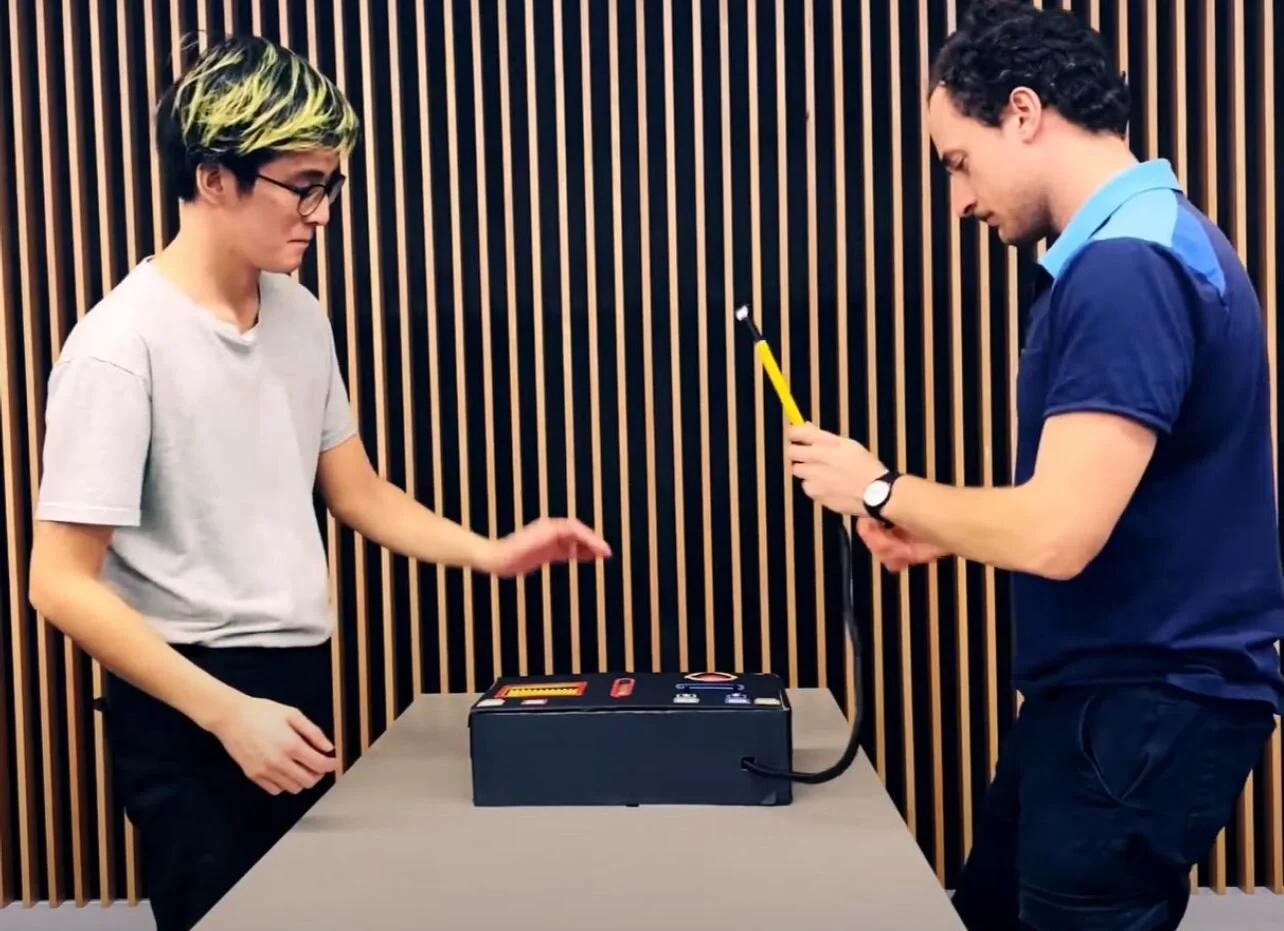JazzHands
We found that the joy of musical collaboration and self-expression is lost due to the steep learning curve of most instruments.
So we built a prototype that anyone can play.



Overview
The Brief
Using a Human-centred Design approach, develop a musical instrument to address a real-world problem and model the interaction on a prototype.
Problem statement
Would-be musicians are intimidated by the musical learning curve, missing out on opportunities for self expression and collaboration.
Outcomes
We designed a musical instrument which utilises the blues scale and motion-based input to give people with no musical knowledge the ability to improvise and jam with others.
My role
UX Designer, User Researcher, Lead Developer
User Research
We interviewed expert musicians & complete novices a-like to understand their joys and pains with music and musical instruments.
We used affinity maps to find common threads and themes.
From our findings we established a clear problem statement.
Would-be musicians are intimidated by the musical learning curve, missing out on opportunities for self expression and collaboration.
The Novice Archetype
The Expert Archetype
Brainstorming
We considered classical instruments.
Where do they excel?
Where do they struggle?
What can we do better?
We put our minds together to brainstorm. Refining our ideas until we were had a vision we were happy with. We arrived at JazzHands.
Hand-motion based interface
Input is intuitive, forgiving, dynamic & expressive.
Blues Scale Output
Fail-free improvisation, never sounds terrible.
The Vision
1. An intuitive interface that only requires familiar motions of control, mapped in accordance with existing conventions.
2. An instrument with a low learning curve – pleasant sounds from the get-go, without precision.
3. An easy instrument that retains enough complexity to reward practise.
4. An instrument which further encourages collaboration & socialisation – even at a beginner level.
Prototyping & Testing
We built a working prototype - from design to program to Lego.
We recruited 5 participants, both experts and novices, to put our idea through user testing.
Through testing, we observed what our users did, and through interviews, we analysed what our users said.




Testing Insights & Subsequent Revisions
INSIGHT 1: A need for clearer and more descriptive signifiers, showing the opportunity for interaction.
INSIGHT 2: A need to understand the current system state and whether something has occurred successfully.
“I don’t know I might be wrong but it just sounds static to me. I’m guessing it’s supposed to be doing something and I’m not really catching on.”
INSIGHT 3: For the purpose of collaboration and composition, expert participants wanted to know what key they were in.
“Let’s say we’re doing an Ed Sheeran song and they’ll be, oh yeah that Ed Sheeran songs in the key of A. I just turn this knob and be in a key of A. Because you can’t go wrong once you’re in the right key.”
INSIGHT 4: Users desired the ability to play distinct and distinguishable notes
“I guess the most difficult part is getting it to play separate notes without it, playing all of them in between... it’s hard to go one note then next note without it going off to something random.”
INSIGHT 5: The affordances of the glove do not match the intended interaction
“Instead of a glove, maybe a lever, where you interact with it once and then it does the thing you want it to do”
















